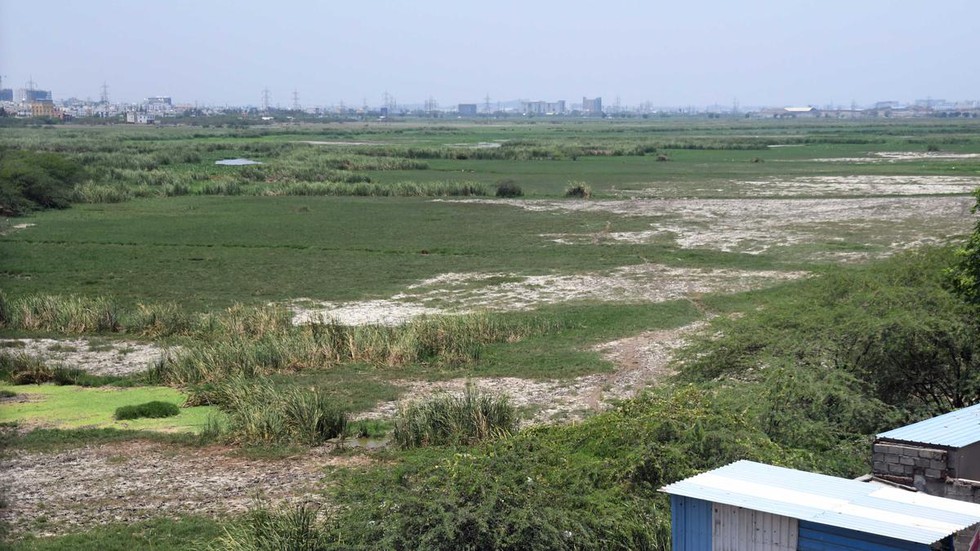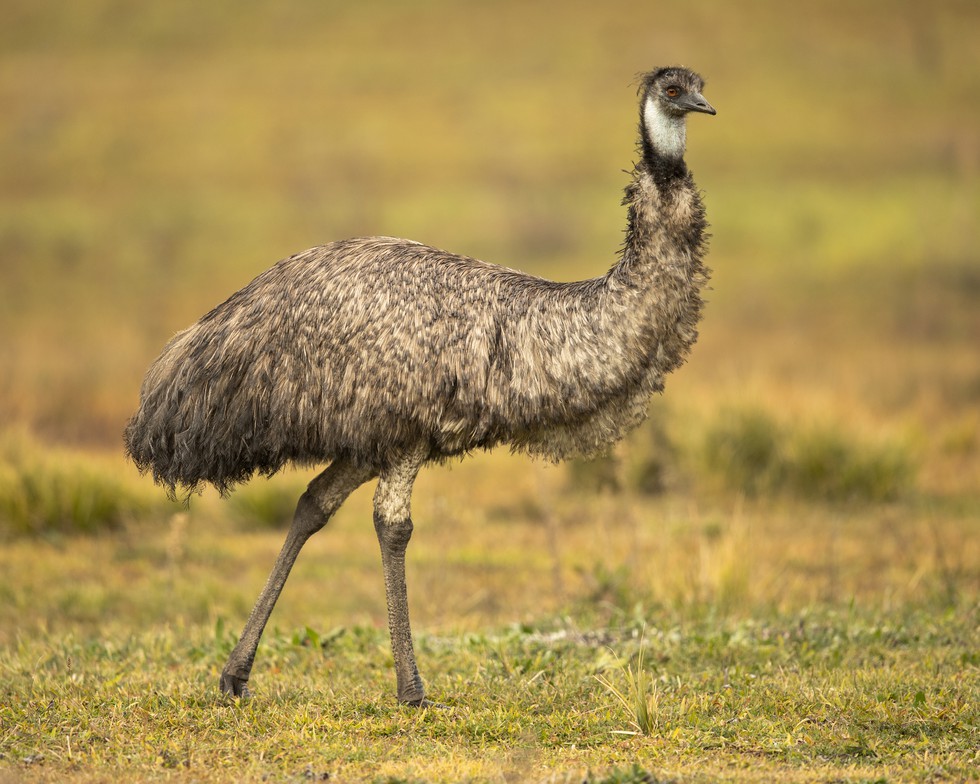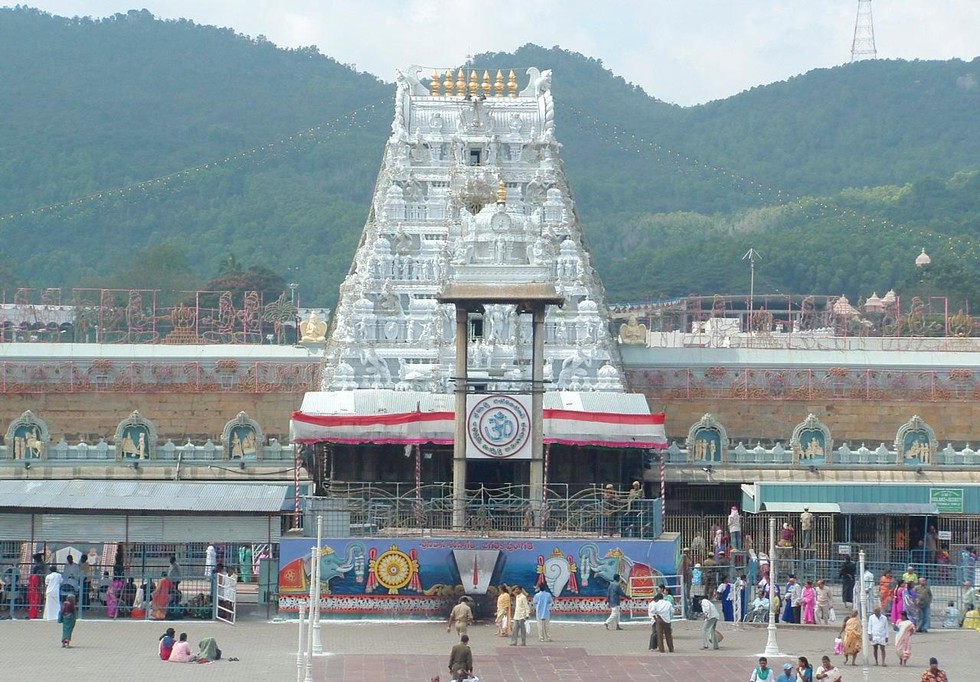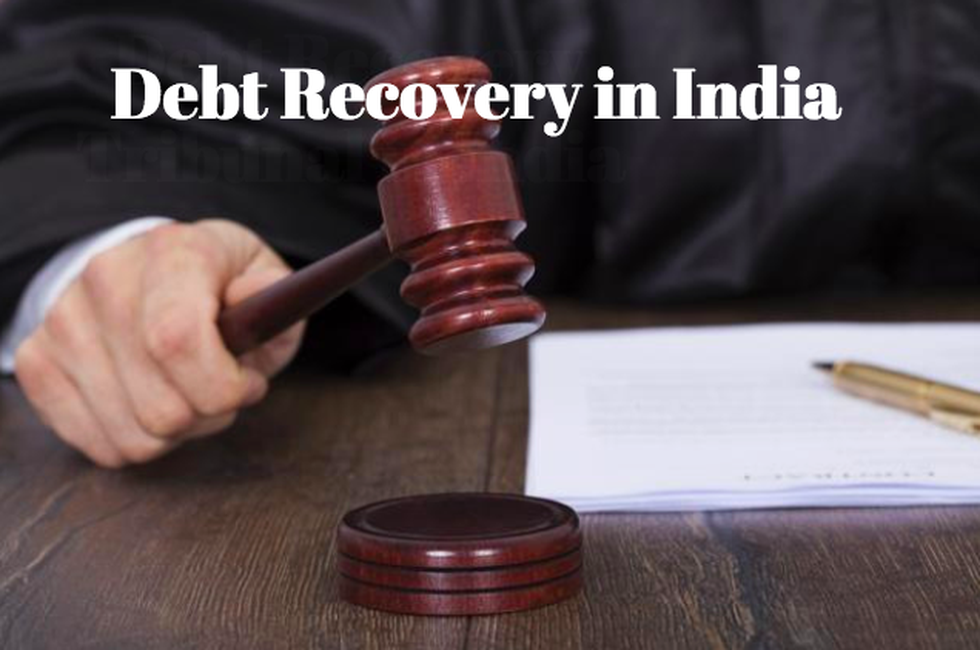
About Quad Group:
- It is a grouping of four democracies namely India, Australia, US and Japan and is known as the quadrilateral security dialogue or quad.
- The aim of this grouping is to ensure a free and open international order based on the rule of law in the Indo-Pacific.
- Objectives: The group’s primary objectives include maritime security, addressing the risks of climate change, creating an ecosystem for investment in the region, and boosting technological innovation.
- Brief History of Quad:
- Following the Indian Ocean tsunami of December 2004, India, Japan, Australia, and the US created an informal alliance to collaborate on disaster relief efforts.
- In 2007, then PM of Japan, Shinzo Abe, formalised the alliance, as the Quadrilateral Security Dialogue or the Quad.
- However, due to Chinese resistance and reluctance shown by India, it could not move ahead.
- Later, during the 2017 ASEAN Summits, all four former members re-joined negotiations to revive the quadrilateral alliance.
- The Quad was upgraded to the ministerial level in September 2019.
- In March 2021, the first-ever summit of QUAD leaders took place virtually.
- It was participated by the PMs/Presidents of all the member countries. The summit was hosted by US.
- Later, in September 2021, the first in-person meeting of Quad leaders was hosted by the US.
- It is not structured like a typical multilateral organisation, and lacks a secretariat and any permanent decision-making body (like the EU or UN).
- Instead, it has focused on expanding existing agreements between member countries and highlighting their shared values
2. Food Import Rejection Alert Portal

About Food Import Rejection Alert Portal:
- It is an online portal for notification of food import rejections at Indian borders.
- It has been developed by the Food Safety Standards Authority of India (FSSAI).
- It is designed to notify the public and relevant food safety authorities about food import rejections at Indian borders.
- Features:
- It will facilitate rapid exchange of information among authorities worldwide on food safety and health risks stemming from rejected food.
- It will also enable relevant food authorities to take immediate action for prevention and control of risks before it causes harm.
- The new portal has an online interactive interface for rapid dissemination of information to ensure enhanced traceability and transparency.
- It also serves as a valuable database for tracking rejected food products and for further strengthening of the risk management system.
What is FSSAI?
- It is an autonomous body established under the Ministry of Health and Family Welfare, Government of India. It has been established under the Food Safety and Standards Act, 2006,which is a consolidating statute related to food safety and regulation in India.
- Mission:Set globally benchmarked standards for food, encourage and ensure that food businesses adhere to these standards, adopt good manufacturing and hygiene practices, and ultimately enable citizens to access safe and right food.
- Functions:
- It is responsible for protecting and promoting public health through the regulation and supervision of food safety.
- It lays down standards and guidelines in relation to articles of food and provides for licensing, registration, and accreditation for food business operators.
- Anyone selling or importing food in India needs a food license issued by FSSAI.
- Its officers carry out food import controls and ensure that they contain no harmful ingredients. It is also responsible for the accreditation of food testing laboratories throughout India.
3. Pallikaranai Marshland

About Pallikaranai Marshland:
- It is a freshwater marshand partly saline wetland situated about 20 kilometres south of the city of Chennai, Tamil Nadu.
- It serves as an aquatic bufferof the flood-prone Chennai and Chengalpattu districts.
- It encompasses 65 wetlands, through two outlets, viz., Okkiyam Madavu and the Kovalam Creek, and falls into the Bay of Bengal.
- On its eastern periphery, the Marsh is flanked by the Buckingham Canal.
- Parts of the Marsh are well below the mean sea level and qualify as low-lying basins.
- It is one of the Ramsar sites in India.
- Fauna:
- The diverse ecosystem of the marshland supports notable species such as Russell’s viper (Daboia siamensis) and birds such as the glossy ibis(Plegadis falcinellus), grey-headed lapwings (Vanellus cinereus), and Pheasant-tailed jacana (Hydrophasianus chirurgus).
- Although tropical in bio-climate, the influence of the Bay of Bengal has been significant on the Marsh.
- Threats: It continues to face significant anthropogenic pressures, including encroachments and sewage discharge.
What is Bathymetric study?
- It involves measuring underwater topography, is essential for developing comprehensive maps that can aid in determining the water storage capacity and flood patterns.
- It plays a critical role in wetland design, restoration, land use planning, and legal boundary determinations.
4. Sustainable Aviation Fuel

About Sustainable Aviation Fuel:
- It is also known as as bio-jet fuel.
- It is made from renewable biomass and waste resources have the potential to deliver the performance of petroleum-based jet fuel.
- It is a liquid fuel currently used in commercial aviation which reduces CO2 emissions by up to 80%.
- Production: It can be produced from a number of sources (feedstock) including waste oil and fats, green and municipal waste and non-food crops.
- It can also be produced synthetically via a process that captures carbon directly from the air.
- Significance:
- Its carbon footprint is significantly lower than aviation turbine fuel (ATF).
- It is ‘sustainable’ because the raw feedstock does not compete with food crops or water supplies, or is responsible for forest degradation.
- It remains the major mature and viable pathway to decarbonise the aviation sector. At the same time, SAF only accounts for 0.3% of the current fuel use for aviation.
5. Credit Default Swaps

About Credit Default Swaps:
- It is a financial derivative that allows an investor to swap or offset their credit risk with that of another investor.
- In a credit default swap contract, the buyer pays an ongoing premium similar to the payments on an insurance policy. In exchange, the seller agrees to pay the security’s value and interest payments if a default occurs.
- It can be used for speculation, hedging, or as a form of arbitrage.
- Credit default swaps played a role in both the 2008 Great Recession and the 2010 European Sovereign Debt Crisis.
What are Mutual Funds?
- A mutual fund is a pool of money managed by a professional Fund Manager.
- It is a trust that collects money from a number of investors who share a common investment objective and invests the same in equities, bonds, money market instruments and/or other securities.
- The income / gains generated from this collective investment is distributed proportionately amongst the investors after deducting applicable expenses and levies.
6. What is Emu?

About Emu:
- It belongs to a group of flightless running birds known as ratites, the most primitive of the modern bird families.
- It is the second-largest living bird in the world (the ostrich is the largest).
- Distribution:
- The Emu is found only in Australia.
- It lives throughout most of the continent, ranging from coastal regions to high in the Snowy Mountains.
- Features:
- Emu is more than 1.5 metres (5 feet) tall and may weigh more than 45 kg (100 pounds).
- Adult female emus are larger and heavier than males.
- Both sexes are brownish, with a dark gray head and neck.
- Their necks and legs are long, but their wings are tiny, reduced to less than 8 inches (20 centimeters).
- Their feet have three toes and fewer bones and muscles than those of flying birds.
- Emus can dash away at nearly 50 km (30 miles) per hour; if cornered, they kick with their big three-toed feet.
- Their strong legs also allow the bird to jump 7 feet (2.1 meters) straight up.
- They are omnivores.
- Lifespan: Five to ten years
- Conservation Status:
- IUCN Red List: Least Concern
7. Key Facts about Falkland Islands

About Falkland Islands:
- Also known as the Malvinas Islands, the Falkland Islands is an internally self-governing overseas territory of the United Kingdom.
- It is an archipelago located in the South Atlantic Ocean, some 500 km from mainland South America.
- It comprises of two large islands (East Falkland and West Falkland) and several hundred smaller ones.
- The two large islands are separated by Falkland Sound (strait).
- The islands are positioned both in the southern and western hemispheres of the Earth.
- Climate: A cool temperate oceanic climate that is characterised by its lack of extremes.
- Capital: Located on the island of East Falkland, is Stanley (also, Port Stanley) is the capital of the Falkland Islands.
- Demographics: The population of the Falkland Islands is English-speaking and consists primarily of Falklanders of African-Irish descent (88% of population).
- Economy: Almost the whole area of the two main islands, outside of Stanley, is devoted to sheep farming.
- Currency: The official currency is the Falkland pound, which is on par with the British pound.
- Government:
- Executive authority is vested in the British crown, and the islands’ government is headed by a governor appointed by the crown.
- The islands are self-governing, although foreign affairs and defence matters are handled by the British government.
8. What is India Cancer Genome Atlas (ICGA) cancer multi-omics data portal?

About ICGA cancer multi-omics data portal:
- It is India’s first comprehensive cancer multi-omics data portal launched by the India Cancer Genome Atlas (ICGA) foundation.
- It is India's first platform providing open access to data from Indian cancer patients.
- It provides open access to clinically correlated data from Indian cancer patients, aimed at transforming cancer research and treatment for Indian populations.
- The portal will be the first in India to offer data that includes DNA, RNA, and protein profiles of breast cancer patients, integrated with clinical outcomes.
- Currently, the platform consists of data from 50 breast cancer patients, with plans to expand to over 500 patients in the coming year.
- This data is freely accessible to the global research community under India's PRIDE (Promotion of Research and Innovation through Data Exchange) guidelines, which promote ethical sharing and collaboration in cancer research.
Key Facts about Indian Cancer Genome Atlas (ICGA):
- It is a national initiative focused on mapping cancers across India, supported by a foundation.
- The ICGA Foundation, a not-for-profit organisation, operates through a public-private-philanthropic partnership.
- It receives support from more than 50 clinicians, researchers, and data analysts.
- Its mission is to enhance cancer diagnosis and treatment for Indian patients and contribute to the global understanding of cancer biology.
- The foundation's first project focuses on the multi-omics profiling of breast cancer, with plans to extend this effort to other types of cancer in the future.
9. Tirupati Balaji Temple

About Tirupati Balaji Temple:
- The Tirumala Venkateswara Temple, also known as the Tirupati Balaji Temple, is a hindu temple situated in the hill town of Tirumala at Tirupati in Chittoor district of Andhra Pradesh.
- The temple is situated at a height of 853 m above sea level and is positioned on Venkata Hill, which is one of the saptagiri (seven hills) of Tirumala Hills.
- It is dedicated to Lord Sri Venkateswara, an incarnation of Vishnu.
- It has been mentioned in holy scriptures such as the Garuda Purana, Brahma Purana and many others.
- History:
- The temple’s ancient roots can be traced to the Pallava dynasty, which had a strong influence on the region during the 9th century.
- Subsequently, the Chola dynasty played a crucial role in further developing and patronizing the temple.
- Later on, during the reign of the Vijayanagara Empire, the temple received significant contributions and endowments, solidifying its place in the religious landscape of South India.
- One of the defining moments in the temple’s history was when the famous saint, Ramanuja, played a pivotal role in reviving the temple and its rituals in the 12th century.
- It is one of the richest temples in the world in terms of donations received and wealth.
- A popular practice in the temple is the donation of hair and various riches in order to please the god.
- Tirupati Laddu: The renowned sweet, Tirupati Laddu, given as a prasad at the temple, has the Geographical indication (GI) tag.
- Architecture:
- The Temple is constructed in Dravidian architectureand is believed to be constructed over a period of time starting from 300 AD.
- Three entrances lead to the sanctum sanctorum - the first is called Mahadwaram.
- A gopuram (gateway), measuring 50 ft, is placed in front of the entrance.
- There are two circumambulation (parikrama) paths.
- The main shrine houses a gold-plated tower that is called Ananda Nilayam, and a temple inside the tower houses the main deity.
- The temple’s vast courtyards, pillars, and halls are adorned with exquisite sculptures and designs that capture the essence of Hindu spirituality.
10. What are Debt Recovery Tribunals (DRTs)?

About Debt Recovery Tribunals (DRTs):
- They are specialized judicial bodies established under the Recovery of Debts Due to Banks and Financial Institutions Act, 1993 (DRT Act).
- RTs play a crucial role in enforcing creditor rights and expediting debt recovery processes under Indian law.
- Types of Cases Handled:
- Their primary mandate is to adjudicate and resolve disputes concerning debt recovery from banks, financial institutions, and other specified entities.
- DRTs can take cases from banks for disputed loans above Rs 20 Lakh.
- The Securitisation and Reconstruction of Financial Assets & Enforcement of Security Interest Act, 2002 (SARFAESI Act) provides access to banks and financial institutions covered under the Act for recovery of secured debts from the borrowers without the intervention of the Courts at the first stage.
- Securitisation Appeals (SAs) can be filed with the DRTs by those aggrieved against action taken by secured creditors under the SARFAESI Act.
- The DRT has the following structure:
- President: A judicial officer appointed by the central government who is qualified to be a District Judge.
- Members: Administrative and technical members appointed by the central government
- Under section 22(2) of the Recovery of Debts Due To Banks And Financial Institutions Act, 1993, DRT has the following powers:
- summoning and enforcing the attendance of any person and examining him on oath;
- requiring the discovery and production of documents;
- receiving evidence on affidavits;
- issuing commissions for the examination of witnesses or documents;
- reviewing its decisions;
- dismissing an application for default or deciding it ex parte;
- setting aside any order of dismissal of any application for default or any order passed by it ex parte;
- any other matter which may be prescribed.
- Jurisdiction: Each DRT is established for a specified territorial jurisdiction, and its jurisdiction extends to cases involving the recovery of debts due to banks and financial institutions within that jurisdiction.
- Appeals and Enforcement: Parties aggrieved by DRT orders have the right to appeal against the decision before the Debts Recovery Appellate Tribunal (DRAT).
- At present, 39 DRTs and 5 DRATs are functioning across the country. Each DRT and DRAT are headed by a Presiding Officer and a Chairperson, respectively.


























































































































































.png)
.png)
.png)
.png)
.png)


.png)
.png)
.png)





.png)
.png)






.png)
.png)
.png)
.png)
.png)
.png)
.png)
.png)
.png)

.png)







.png)
.png)


.png)
.png)
.png)


.png)

.png)
.png)





.jpg)

.png)
.png)


.png)

.png)
.png)
.png)

.jpg)

.jpg)


.png)

.png)
.png)
.png)
.png)
.png)
.png)
.png)
.png)
.png)
.png)




.png)

.png)





.png)
.png)
.png)
.png)
.png)
.png)
.png)
.png)
.png)
.png)
.jpg)
.jpg)

.png)
.png)
.png)
.png)
.png)
.png)
.png)
.png)
.png)
.png)
.png)
.png)
.png)
.png)
.png)
.png)
.png)
.png)
.png)
.png)
.png)
.png)



.png)
.png)

.jpg)
.jpg)


.jpg)
.jpg)
.jpg)
.jpg)
.jpg)

.jpg)








.jpg)
.jpg)
.jpg)
.jpg)
.jpg)

















.jpg)
.jpg)







.jpg)


















.jpg)
.jpg)






























































































.jpg)
.jpg)


























.jpg)

.jpg)










.jpg)








.jpg)




.jpg)










.jpg)


















.jpg)












































.jpg)














.jpg)
.jpg)
.jpg)





.jpg)

.jpg)
.jpg)





































































.jpg)


































.jpg)
.jpg)
















































.jpg)












.jpg)


.jpg)




.jpg)
.jpg)
.jpg)

.jpg)
.jpg)
.jpg)
.jpg)

.jpg)
.jpg)
.jpg)

.jpg)
.jpg)
.jpg)
.jpg)
.jpg)
.jpg)
.jpg)
.jpg)

.jpg)


.jpg)
.jpg)
.jpg)
.jpg)
.jpg)
.jpg)
.jpg)
.jpg)
.jpg)
.jpg)











.jpg)
.jpg)





.jpg)
.jpg)
.jpg)
























.jpg)
























.jpg)









.jpg)
.jpg)







.jpg)
.jpg)









































.jpg)
.jpg)
.jpg)
.jpg)
.jpg)

.jpg)
.jpg)
.jpg)
.jpg)
.jpg)


.jpg)
.jpg)
.jpg)
.jpg)
.jpg)

.jpg)
.jpg)
.jpg)
.jpg)
.jpg)
.jpg)
.jpg)
.jpg)
.jpg)
.jpg)
.png)

.png)
.png)

.png)
.png)
.png)
.png)


.jpg)
.jpg)

.jpg)
.jpg)
.jpg)

.png)
.png)
.png)
.png)
.png)
.png)
.png)

.png)
.png)
.png)
.png)
.png)
.png)
.png)
.png)
.png)
.png)





































































-min.png)



.png)




.png)








































